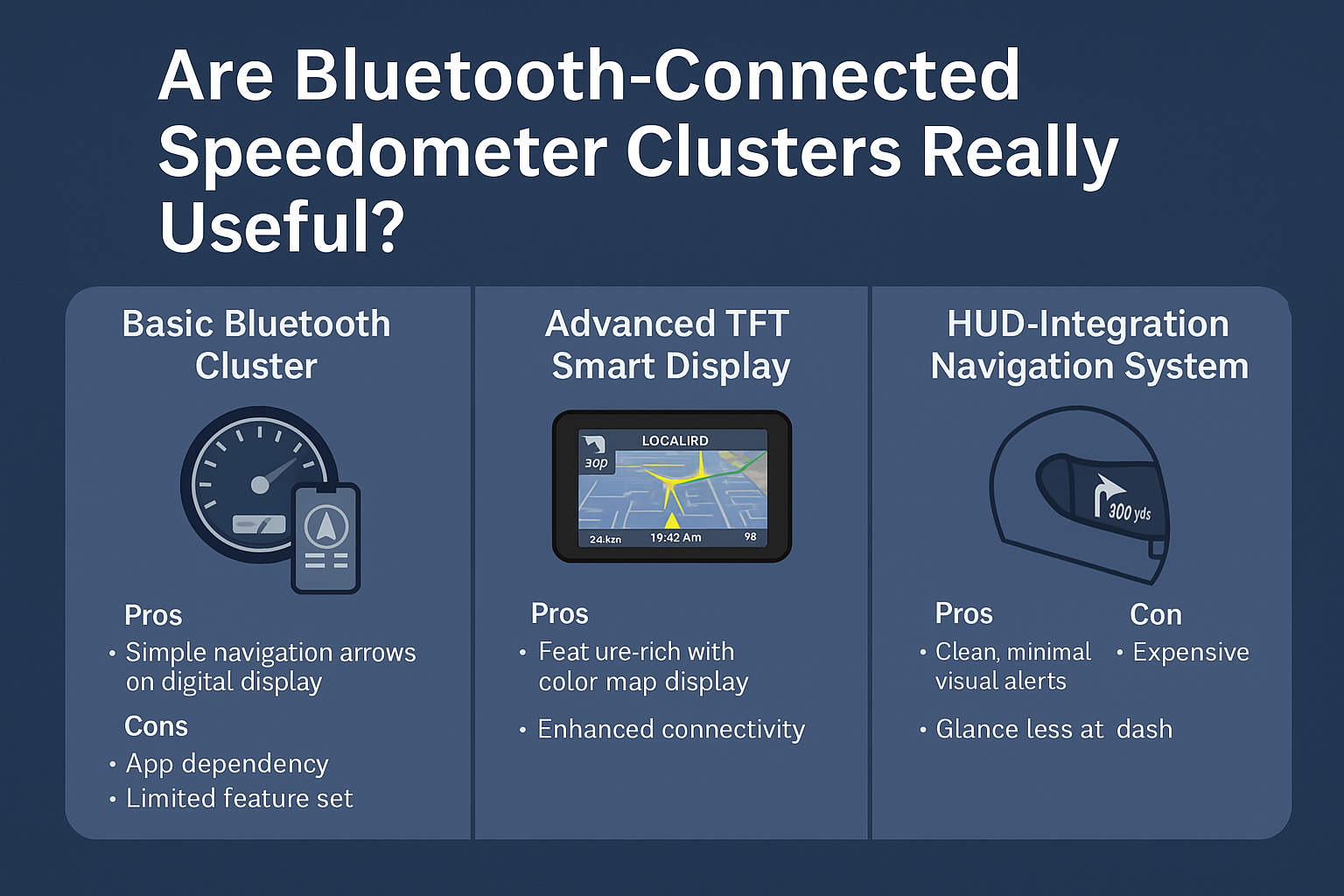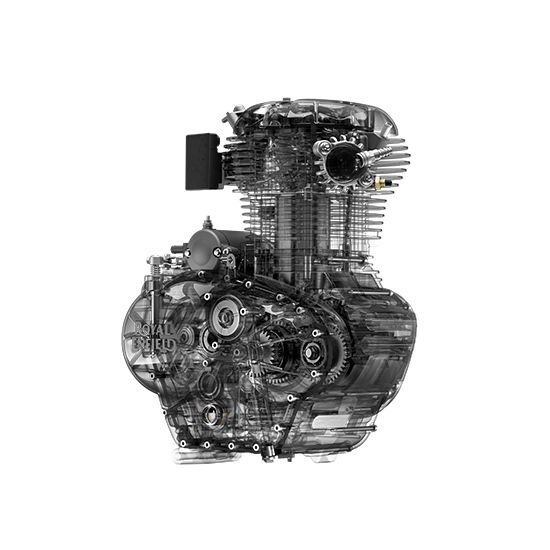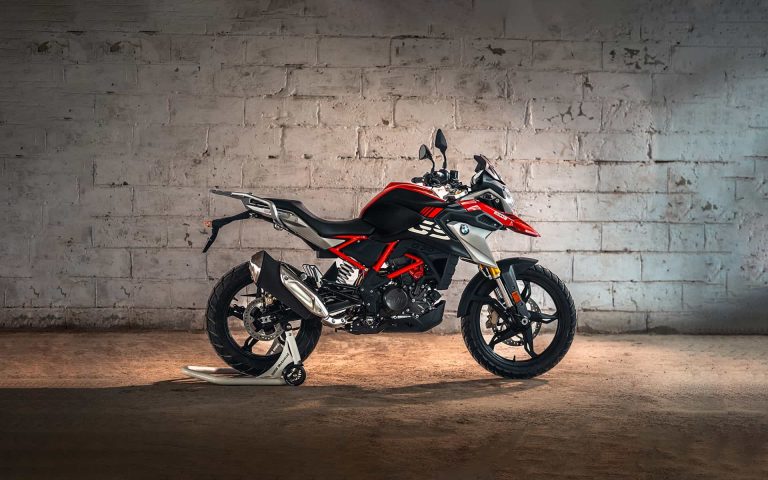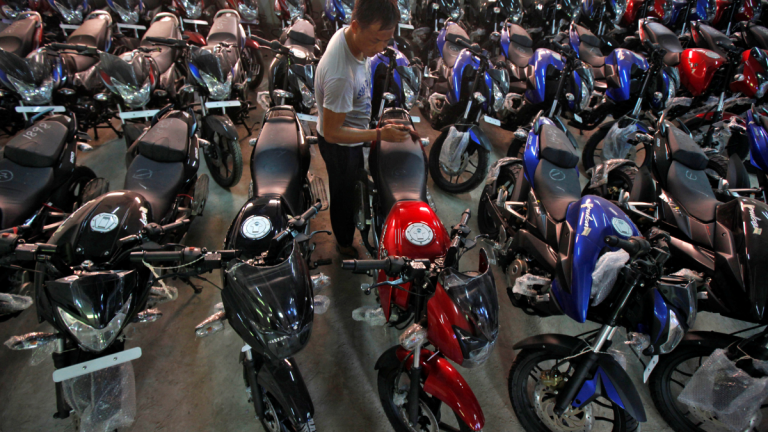The motorcycle industry has evolved rapidly in the last few years, and one of the most noticeable upgrades has been the introduction of Bluetooth-enabled speedometer clusters. These “smart dashboards” are now featured in several modern bikes and scooters, promising navigation support, call alerts, music control, and real-time vehicle information — all integrated directly into the instrument panel.
But are these features genuinely useful for riders? Or are they just another marketing gimmick? And what could be done to make them truly reliable, rider-friendly, and distraction-free? Let’s break it down.
What Bluetooth Clusters Actually Do
At their core, Bluetooth-connected instrument clusters are designed to integrate your smartphone with your motorcycle. They work through a dedicated app from the manufacturer and typically provide features like:
Turn-by-turn navigation on the dash
Call and message notifications
Music and media control
Trip data, vehicle diagnostics, and service reminders
Ride tracking and performance stats
Some premium motorcycles even take it a step further, offering full-color TFT displays with voice-assist integrationand smartwatch compatibility.
For daily riders and touring enthusiasts, these clusters reduce the need to constantly check your phone or install third-party mounts, keeping essential information right in front of you.
Why Riders Love Them
1. Seamless Navigation
Instead of fumbling with your phone on the handlebar, Bluetooth clusters display simple arrows, distance indicators, and next-turn prompts directly on the dash. Some high-end systems even provide real-time map layouts for better clarity.
2. Hands-Free Convenience
Integrated call alerts, music playback, and notification previews make it easier to stay connected while keeping both hands on the handlebar. Paired with handlebar-mounted controls, riders don’t need to take their eyes off the road.
3. Enhanced Rider Insights
Many systems provide fuel efficiency reports, trip summaries, riding patterns, and vehicle diagnostics. This data helps riders plan better, optimize fuel usage, and keep their motorcycles in peak condition.
The Frustrations Riders Face
While Bluetooth clusters sound like a dream feature, real-world experiences often highlight some limitations:
1. App Dependency & Compatibility Issues
Most clusters rely heavily on manufacturer-specific apps, which need regular updates to stay compatible with changing smartphone software. A single bug can temporarily break navigation, notifications, or syncing.
2. Connectivity Drops & Pairing Problems
Long rides expose one common annoyance: unstable Bluetooth connections. Sudden disconnections, failed auto-reconnects, and inconsistent pairing with intercoms frustrate many riders.
3. Overloaded Notifications
Having every message, call, and alert pop up on your dash can create distractions. When riding at speed, even a few seconds of glancing away from the road can be risky.
4. Limited Customization
While some riders want detailed stats and alerts, others prefer a minimal display focused on speed, gear, and navigation. Most current systems lack flexible personalization options.
5. Power Drain on Phones
Because these systems depend on constant GPS tracking, Bluetooth connectivity, and app activity, your phone battery drains faster on long-distance rides.
How They Can Become Truly Better
The next generation of smart clusters needs to focus on simplicity, consistency, and rider safety. Here’s what would take them to the next level:
1. Universal Standardization
Every brand currently has its own interface and app ecosystem. A common, standardized platform would make using Bluetooth clusters easier for riders who switch bikes or own multiple motorcycles.
2. Smarter, Safer Navigation
Instead of cluttering the screen with text-heavy prompts, clusters should focus on clean, minimal visual cues paired with voice-guided navigation for better safety.
3. Offline-First Functionality
A major improvement would be offline navigation support. Riders in remote regions or mountain passes often face network dropouts, and cached maps would make navigation far more reliable.
4. Glove-Friendly & Tactile Controls
Handlebar-mounted scroll wheels, buttons, or joysticks allow riders to manage music, calls, and navigation without touching the dash. This keeps eyes forward and reduces distractions.
5. Integration with Wearables & HUDs
Smart helmets and heads-up displays are the future. Subtle visual or haptic alerts inside a helmet could eliminate constant dash-glancing, creating a safer and more immersive riding experience.
Who Benefits the Most
Daily Commuters: Enjoy quick navigation updates and hands-free connectivity.
Touring Riders: Benefit from trip logs, navigation aids, and service reminders for long-distance journeys.
Tech Enthusiasts: Appreciate the convenience of phone integration, riding stats, and connected features.
On the other hand, track riders and off-road enthusiasts may find Bluetooth clusters unnecessary, as they often prefer minimalist dashboards focused only on performance data.
Final Verdict
Yes, Bluetooth-connected speedometer clusters are useful — but only when designed thoughtfully. They simplify navigation, reduce dependency on phones, and make modern bikes smarter and more connected.
However, to truly add value, manufacturers must prioritize rider safety, seamless connectivity, and user-friendly interfaces. The future lies in cleaner UIs, universal integration, better offline support, and innovative solutions like smart helmets and HUDs.
Until then, these clusters are a helpful convenience, not a must-have necessity — but they’re evolving rapidly and may soon become an essential part of the motorcycling experience.



